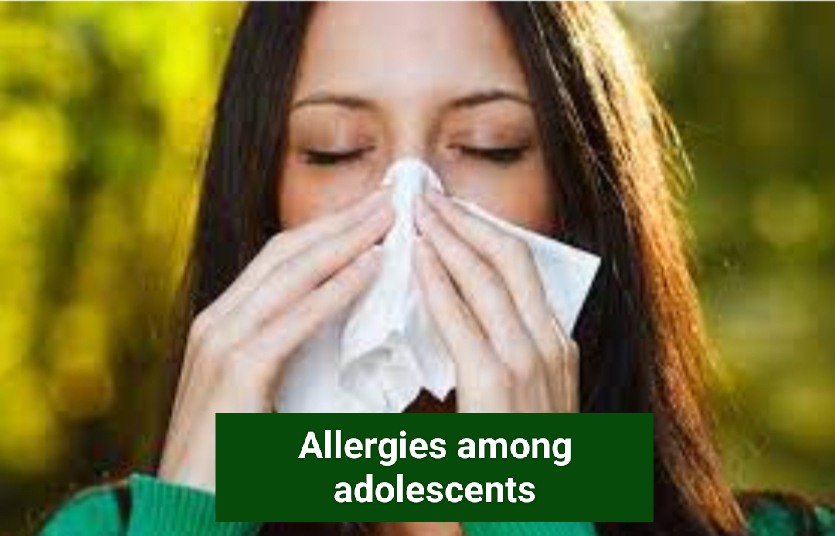Allergies among adolescents
Allergies are aberrant immune system reactions to substances that are normally innocuous to the vast majority of people. When someone is allergic to anything, their immune system becomes confused and believes that the substance is harmful to the body. The compounds that cause allergic reactions are known as allergens. Allergens include dust, food, plant pollen, and medicine, among others. The body develops antibodies to defend itself against certain allergies. The antibodies cause specific cells in the system to let One of the substances that might mix with the bloodstream is histamine. This chemical then acts on the nose, eyes, skin, lungs, and gastrointestinal tract, causing allergic reaction symptoms. Exposure to the same substances in the future causes the same antibody response, implying that every time one comes into touch with the same allergen, the body produces an allergic reaction.
Allergic reactions can range from minor symptoms like a runny nose to more serious ones like difficulty breathing. Teenagers with asthma frequently have allergic reactions to colds, and asthma attacks are another kind of allergens. Some allergies cause various symptoms. In extremely rare situations, allergic reactions cause a severe reaction known as "anaphylaxis," which is characterized by trouble breathing, difficulty swallowing, swelling of the tongue, lips, and neck, and disorientation. This allergic reaction begins as soon as the
The system is exposed to compounds that cause allergic
reactions, such as peanuts, with some reactions delayed by up to four hours.
People develop allergies for a variety of causes, one of which may be
inherited, but this does not guarantee that children will inherit allergies
from their parents. Food, airborne particles, insect bites and stings,
medications, and chemicals are some of the most common allergens. Food
allergies are common in infants and usually disappear as the child develops.
Food allergies include milk and dairy products, wheat, soy, eggs, peanuts, and
shellfish. Some people are allergic to specific stings and bites.
insects.
The venom in the bite is what causes the reaction, which can be as severe as
anaphylaxis in some kids. Some teenagers are allergic to airborne particles,
often known as environmental allergens. In addition, they are the most
prevalent allergens. These allergens include dust mites, animal dander, mold
spores, grass pollens, trees, and ragweed. Some teens are also allergic to
certain antibiotics. Another common allergy is chemical, and particular
chemicals found in laundry detergents and cosmetics can cause itchy rashes.
Allergists
typically treat allergy conditions. They may ask about allergy symptoms and
whether it is hereditary. They may also order diagnostic testing, such as blood
or skin tests, depending on the type of allergy. The best strategy to treat
allergies is to fully avoid the items that cause them. However, there are some
drugs and injections available to treat allergies.
People who have food allergies to peanuts should avoid any food containing even
the slightest quantity of peanuts. Also, avoid using cosmetics containing
skin-allergenic ingredients. You can also avoid airborne allergies by keeping
pets in confined areas and away from the bedroom. Periodically replace carpets
and rugs. Avoid storing items that accumulate dust. In addition, clean the room
and the entire house on a frequent basis.

No comments:
Post a Comment